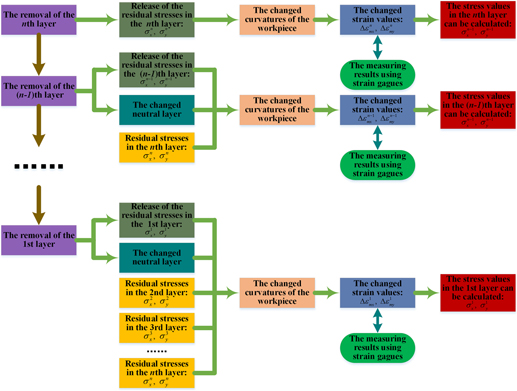Article contents
Accurate measurement of the surface residual stresses generated by milling in pre-equilibrium state
Published online by Cambridge University Press: 14 June 2016
Abstract

We introduce a method to measure accurately surface residual stresses in the pre-equilibrium state, which were generated in workpieces during the milling process. The method takes into account strain changes and uses the inverse calculation. Material in the stress layer was removed layer by layer, and the strain change on the opposite side of the machined surface was measured. We also consider the change of the bending moment caused by the changed neutral layer. The stress values were calculated from the last layer to the first layer, and the residual stresses generated by milling are measured. We created a finite element model of a real workpiece and the measured stress values were used as inputs for the model. The measuring method was validated using finite element analysis. We find that our measuring method can be successfully used in practice to measure surface residual stresses and it provides reliable indicators for evaluating the surface properties of machined workpieces.
- Type
- Articles
- Information
- Copyright
- Copyright © Materials Research Society 2016
Footnotes
Contributing Editor: Jürgen Eckert
References
REFERENCES
- 2
- Cited by


